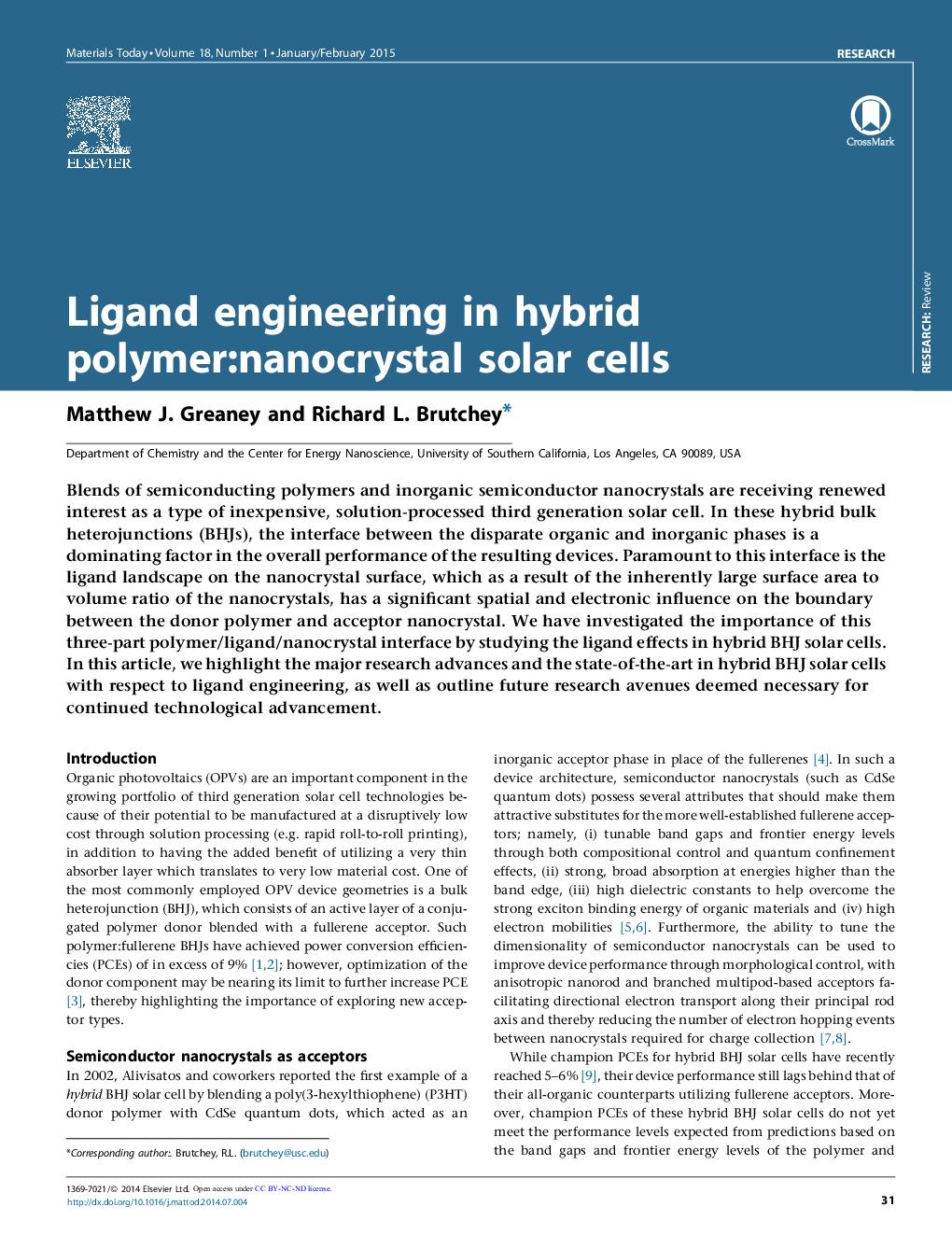| Article ID | Journal | Published Year | Pages | File Type |
|---|---|---|---|---|
| 811805 | Materials Today | 2015 | 8 Pages |
Blends of semiconducting polymers and inorganic semiconductor nanocrystals are receiving renewed interest as a type of inexpensive, solution-processed third generation solar cell. In these hybrid bulk heterojunctions (BHJs), the interface between the disparate organic and inorganic phases is a dominating factor in the overall performance of the resulting devices. Paramount to this interface is the ligand landscape on the nanocrystal surface, which as a result of the inherently large surface area to volume ratio of the nanocrystals, has a significant spatial and electronic influence on the boundary between the donor polymer and acceptor nanocrystal. We have investigated the importance of this three-part polymer/ligand/nanocrystal interface by studying the ligand effects in hybrid BHJ solar cells. In this article, we highlight the major research advances and the state-of-the-art in hybrid BHJ solar cells with respect to ligand engineering, as well as outline future research avenues deemed necessary for continued technological advancement.
